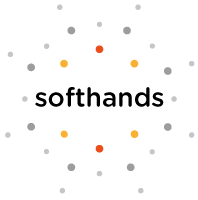
Although many advances have been made in the mechatronics and computational hardware of artificial hands, the state of the art appears to be only marginally closer to a satisfactory functional approximation of the human hand than it was twenty years ago. The main reasons for this invest some fundamental issues in the understanding of the organization and control of hands, and ultimately the lack of a theory to guide us in the search for a principled approach to taming the complexity of hands as the physical embodiments of the sense of active touch, and comprised of the sensorimotor apparatus that ultimately creates the link between perception and action.
This project aims to break through the rather slowly moving front of the state of the art because of the combination of two crucial, recent innovations, an approach to the description of the organization of the hand sensorimotor system in terms of geometric constraints, or synergies, and the understanding of the role of variable impedance actuation in embodying intelligent grasping and manipulation behaviours in humans, and the availability of a new generation of “robot muscles”, i.e. actuators capable of tuning their impedance to adapt to the environment and the task.
One unique feature of the research is that the new cognitive and physical architecture for artificial hands will be integrated within a complete cognitive and physical architecture for artificial humans, in the form of a humanoid robot.

